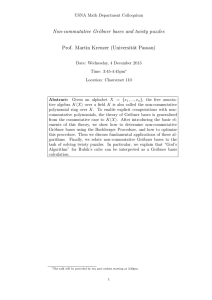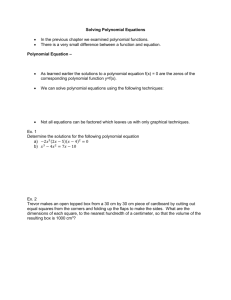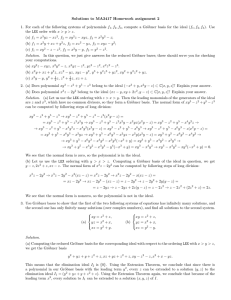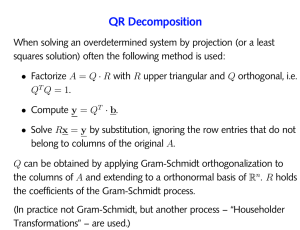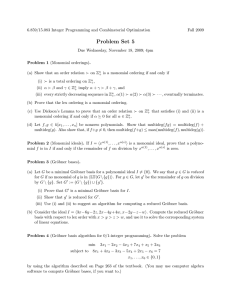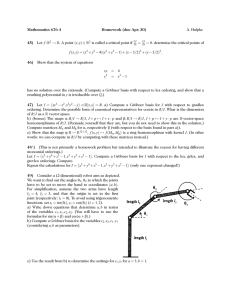MA3417 Homework assignment 2 Due on October 31, 2013
advertisement
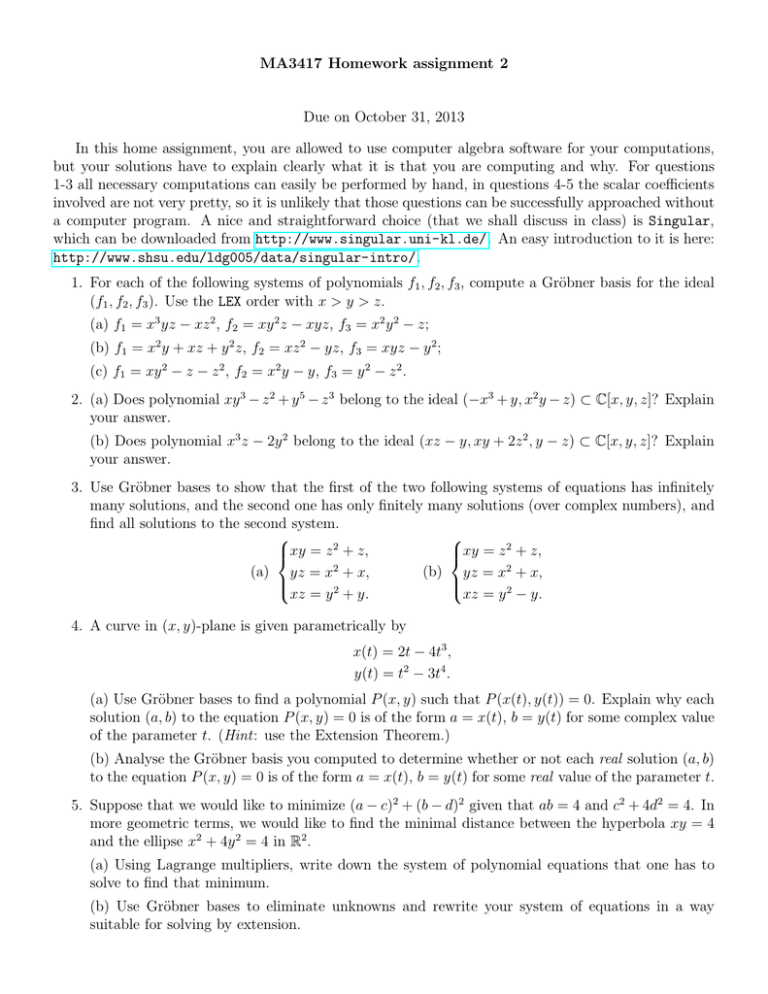
MA3417 Homework assignment 2 Due on October 31, 2013 In this home assignment, you are allowed to use computer algebra software for your computations, but your solutions have to explain clearly what it is that you are computing and why. For questions 1-3 all necessary computations can easily be performed by hand, in questions 4-5 the scalar coefficients involved are not very pretty, so it is unlikely that those questions can be successfully approached without a computer program. A nice and straightforward choice (that we shall discuss in class) is Singular, which can be downloaded from http://www.singular.uni-kl.de/. An easy introduction to it is here: http://www.shsu.edu/ldg005/data/singular-intro/. 1. For each of the following systems of polynomials f1 , f2 , f3 , compute a Gröbner basis for the ideal (f1 , f2 , f3 ). Use the LEX order with x > y > z. (a) f1 = x3 yz − xz 2 , f2 = xy 2 z − xyz, f3 = x2 y 2 − z; (b) f1 = x2 y + xz + y 2 z, f2 = xz 2 − yz, f3 = xyz − y 2 ; (c) f1 = xy 2 − z − z 2 , f2 = x2 y − y, f3 = y 2 − z 2 . 2. (a) Does polynomial xy 3 − z 2 + y 5 − z 3 belong to the ideal (−x3 + y, x2 y − z) ⊂ C[x, y, z]? Explain your answer. (b) Does polynomial x3 z − 2y 2 belong to the ideal (xz − y, xy + 2z 2 , y − z) ⊂ C[x, y, z]? Explain your answer. 3. Use Gröbner bases to show that the first of the two following systems of equations has infinitely many solutions, and the second one has only finitely many solutions (over complex numbers), and find all solutions to the second system. 2 2 xy = z + z, xy = z + z, (b) yz = x2 + x, (a) yz = x2 + x, xz = y 2 − y. xz = y 2 + y. 4. A curve in (x, y)-plane is given parametrically by x(t) = 2t − 4t3 , y(t) = t2 − 3t4 . (a) Use Gröbner bases to find a polynomial P (x, y) such that P (x(t), y(t)) = 0. Explain why each solution (a, b) to the equation P (x, y) = 0 is of the form a = x(t), b = y(t) for some complex value of the parameter t. (Hint: use the Extension Theorem.) (b) Analyse the Gröbner basis you computed to determine whether or not each real solution (a, b) to the equation P (x, y) = 0 is of the form a = x(t), b = y(t) for some real value of the parameter t. 5. Suppose that we would like to minimize (a − c)2 + (b − d)2 given that ab = 4 and c2 + 4d2 = 4. In more geometric terms, we would like to find the minimal distance between the hyperbola xy = 4 and the ellipse x2 + 4y 2 = 4 in R2 . (a) Using Lagrange multipliers, write down the system of polynomial equations that one has to solve to find that minimum. (b) Use Gröbner bases to eliminate unknowns and rewrite your system of equations in a way suitable for solving by extension.
